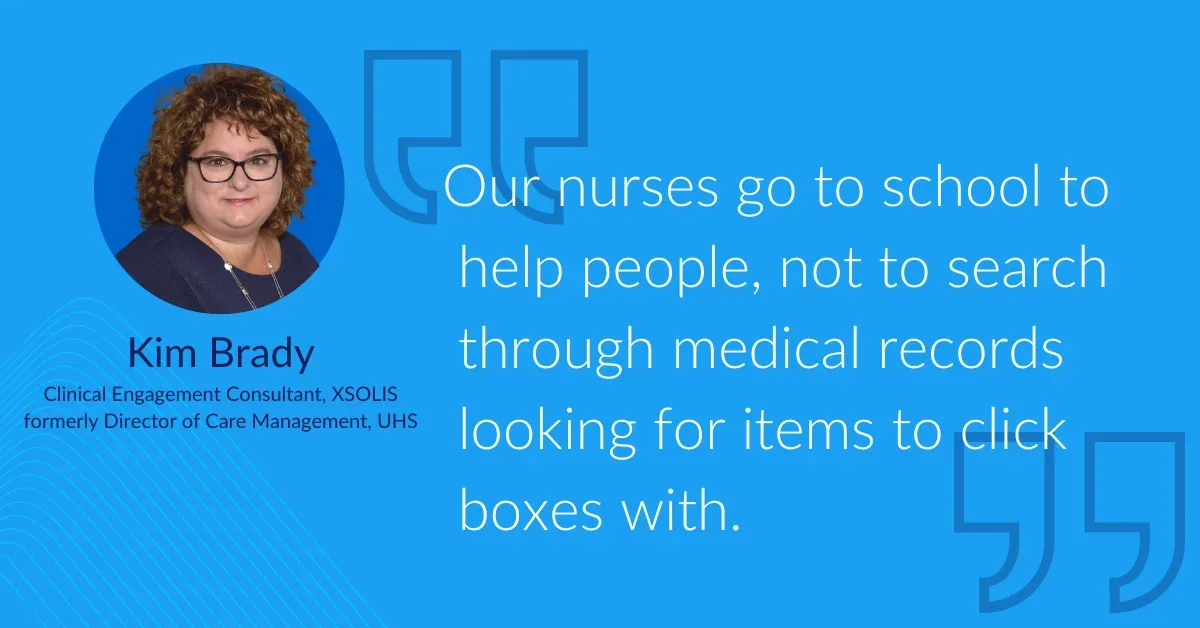‘Nurses go to school to help people,’ and CORTEX renewed that focus for Kim Brady and staff
When Kim Brady was Director of Care Management at United Health Services (UHS) Binghamton in upstate New York, they always needed more staff. Sound familiar?
Kim’s biggest pain point: a way to prioritize their patients – the financial versus compliance risk patients – to better utilize their existing staff. Not to mention, she experienced frustration with the lack of standards and ineffective communication with payers, since each has different criteria.
A 28-year veteran of UHS, she brought a fresh perspective to her DCM role when she investigated Xsolis’ CORTEX® solution, now known as Dragonfly. Early into a sales call, she wanted to move forward because Dragonfly “seemed like it would make us more efficient,” she said, “putting nurses back at the bedside to work on discharge planning.”
Kim even went back to her team and said, “I think this will change the way people approach medical necessity.”
At the time, she reported to the Vice President of Patient Safety and Quality, and they agreed and immediately aligned on the benefits that Kim had identified. She engaged with the Chief Medical Officer and Chief Financial Officer as well, to get executive buy-in with how Xsolis could appropriately decrease their observation rate and reduce concurrent denials.
When she implemented Dragonfly in 2018, she also held a series of internal improvement workshops with her staff and learned everyone was approaching medical necessity a little differently. That’s because “(screening criteria) are just a tool, not the end-all, be-all,” according to Kim.
After go-live, the improvements quickly took effect:
- Successfully appealed denials increased from 45% to almost 90%, which allowed Kim to collaboratively reassess workflows with input from Xsolis’ teams.
- The observation rate began to right-size by dropping an additional 2%.
- Care management staff reported they saved over two hours per day
In fact, during the week of go-live, Kim fielded concerns from one of her nurses who “thought she was doing it wrong.” “I have two hours more in my day, and I actually have time to breathe,” the nurse said.
“Since my biggest pain point was staffing concerns, I knew partnering with Xsolis could streamline things for our staff, and the time savings and job satisfaction made Dragonfly a game-changing solution for us,” she said. “Our nurses go to school to help people, not to search through medical records looking for items to click boxes with.”
Are you looking to save time and increase job satisfaction for your team? Reach out to learn how Xsolis supports these and other goals for your organization.
